MORELIA
Tourism in MORELIA
This gorgeous tourist destination has preserved its colonial feel over the centuries. Its tranquil streets are silent witnesses to the history that has gathered in every corner. One of Morelia’s main features is the cathedral, a masterpiece of pink quarry. The Historic Center has been designated a World Heritage Site by UNESCO.
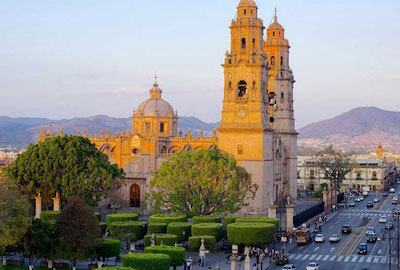
But apart from the beautiful colonial buildings, the city also offers a modern infrastructure that includes a Convention Center, the “Expocentro”, and great locations and services for conventions and all kind of events.
The ancient traditions and culture of Morelia are display in the colorful handicrafts. The city has many stores to browse and buy the beautiful works of art produced in the state of Michoacán by local artisans, or you can admire the fantastic creations in the decoration of the restaurants and hotels.
While in Morelia, don’t forget to try the traditional dishes, a mixture of Purepecha and European ingredients and recipes, such as corundas and uchepos (regional tamales), the Tarascan soup, the “pollo placero”, the “carnitas” (pork meat), and the traditional “salsa de lago” (lake sauce) made with fried “charales” (small white fish). For candy lovers, Morelia offers a wide selection: “chongos zamoranos” (dessert with milk, sugar and cinnamon), ates morelianos (candied fruit), buñuelos (small doughnut) or a “nieve de pasta” (local ice-cream), and of course a cup of hot handmade chocolate.
It has a warm, semi-humid climate with an average temperature of 23ºC (73ºF). Morelia is the venue for important music and movie festivals, a good reason to visit the city many times.
Map of MORELIA
Tourist Attractions in MORELIA
Antigua Alhóndiga
Baroque construction built in 1774. Today it is part of the Palace of Justice.
Colegio de San Nicolás de Hidalgo
Founded in the 16th century. It is a neoclassical building with two-level network of arches and nice murals on the second floor.
“Clavijero” Cultural Center/Palace
This grand Baroque-style building was constructed in 1660 by the Jesuits. Today it houses the Tourism Ministry.
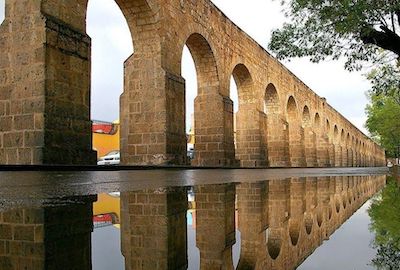
Aqueduct
Morelia’s aqueduct runs along dozens of colonial arches that stretch for over a mile with 253 arches. It was built in 1785 to provide drinking water for the city.
Government Palace
Baroque building whose construction began in 1760. It houses the state executive branch since 1867. There are three murals here painted by Michoacán artist Alfredo Zalce, with portray different periods in the history of Mexico in general and Michoacán in particular.
Federal Palace
Eclectic building with some French-style influence constructed in the 18th century. Since 1935 it houses the Federal Government Offices.
Municipal Palace
The Baroque-style building was constructed late in the 18th century. Originally it housed a repository for the control and sale of tobacco. In 1859 it was remodeled to house the Municipal Palace.
Palace of Justice
It is a beautiful old mansion. The façade shows a clear French influence, and in the second floor there are decorative elements with pre-Hispanic influence.
“The Tarascas” Fountain
It depicts three indigenous women holding up a basket full of regional fruits. It has become an iconic symbol of the city.
Plaza Villalongín
The plaza feature a beautiful garden that remembers the quiet life of the viceroyalty.
Portales
The portals are located in the historic center in front of the Cathedral and other buildings of the 17th, 18th, and 19th centuries. It is a popular place to hangout on, and an excellent choice if you want a simple, great tasting cup of coffee.
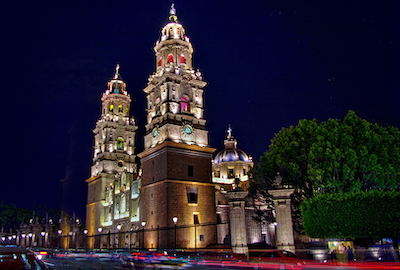
Cathedral
A majestic structure built between 1660 and 1774 in a Baroque-style. It is known for its 200-foot towers, among the tallest in the land, and for its 4,600 pipe organ, one of the finest in the world. Among the many treasures inside the Cathedral are the neoclassical altarpieces in the chapels. There are two beautiful Cabrera paintings in the vestry. The “Palacio Episcopal” is annex.
Sanctuary of Guadalupe and ex Convent of San Diego
Built in the 18th century it is the most ornate church in Morelia. The Neo-baroque decoration covers vaults, walls and dome.
Church and Convent of St. Francis (House of the Handicrafts)
The Franciscans began the construction of this Plateresque-style building in 1531. It housed the first monastery established in Valladolid. Since 1973 it has operated as the Michoacán Crafts House with a museum. Open daily from 8:00 to 20:00 hrs.
Templo de las Monjas (Temple of the Nuns)
Built between 1729 and 1737, this baroque temple was dedicated to Santa Catalina de Siena. It picked up the name “The Nuns” because it belonged to an order of the Catherine’s, who moved from Las Rosas to this site in 1798, an event depicted on a huge canvas in the Michoacán Regional Museum.
Templo de los San Agustín (Temple of the Augustinians)
Built in the 16th century with a late Plateresque façade and a gothic influenced cloister.
Templo y Conservatorio de Música de Las Rosas (Temple and Conservatory of Music of the Roses)
Both buildings have a baroque style and were constructed in the 18th century. The Conservatory took over the facility in the late 1940s, and today it houses the internationally renowned Boys Choir of Morelia in addition to the School of Music.
Templo y Ex-Convento del Carmen (Temple and Ex Convent of our Lady of Carmen)
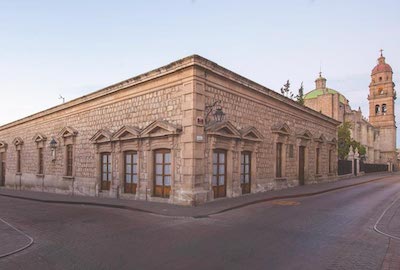
Museo Casa de Natal de Morelos (House of Morelos)
This Baroque-style mansion was built in 1758 and acquired by independence hero Jose Maria Morelos y Pavon. Currently, the museum exhibits paintings, photographs, furniture and other antique objects, as well as two impressive carriages. Open daily from 9:00 to 19:00 hrs.
Museo del Estado (State Museum)
It is located in an 18th-century building and has three sections: archaeology, history and ethnology. There is example of an antique pharmacy dating from 1868. Open Monday through Friday from 9:00 to 14:00 and 16:00 to 20:00 hrs pm, and Saturdays, Sundays and holidays 10:00 to 18:00 hrs.
Museo de Arte Colonial (Museum of Colonial Art)
Located in an 18th century baroque-style house. The first printing press of the city was established here in 1821. Today the museum exhibits works from the vice regal period. The museum houses an important collection of more than one hundred figures of Christ from the sixteenth to twentieth century. Open Monday through Friday from 9:00 to 20:00 hrs. Saturdays, Sundays and holidays from 10:00 to 19:00 hrs.
Museo de Arte Contemporáneo “Alfredo Zalce” (Contemporary Art Museum)
This 19th century building of French influence has 13 exhibition rooms with 20th century art collection. Open Monday through Friday from 10:00 to 19:45 hrs, weekends and holidays from 10:00 to 18:00 hrs.
Museo de Historia Natural “Dr. Manuel Martínez Solórzano” (Museum of Natural History)
The museum intends to disseminate information on the flora and fauna of the region and create an environmental awareness. Open daily from 10:00 to 18:00 hrs.
Museo Regional Michoacano (Regional Museum of Michoacan)
A baroque construction. It has one room dedicated to the ecology in Michoacán and five other rooms exhibit the history of the State from the pre-Hispanic era to the modern times. There is a great Alfredo Zalce ́s mural in the stairs. Open Tuesday to Sunday from 9:00 a 17:00 hrs.
Centro Cultural Universitario (University Cultural Center)
A contemporary building with two rooms. The Center exhibits historic books, paintings and documents. Open Monday to Saturday from 9:00 to 14:00 hrs. and from 16:00 to 20:00 hrs.
Museo del Dulce (Candy Museum)
It has a decoration and furniture of the beginning of the 20th century. And it displays the way the candies are elaborated. Open daily from 10:00 to 14:30 hrs and 16:30 to 20:00 hrs.
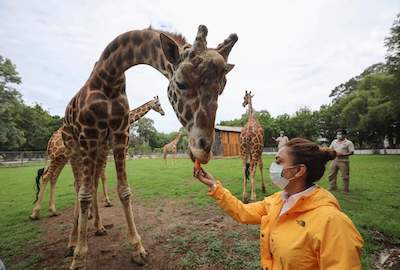
Parque Zoológico Benito Juárez (Zoo)
It is the most important zoo of the country in the matter of variety of species (440) and number of specimen (3,800). It has the largest bird collection in Latin America. Within the zoo are other family attractions, such as artificial lake, auditorium, scenic train, children playground and restaurants.
Open from Monday to Thursday from 10:30 to 20:00 hrs. Friday and Saturday from 10:00 to 21:00 hrs. Sunday from 10:00 to 20:00 hrs.
Convention Center
Considered one of the best in the country. It has 9 event halls of different sizes that go from 10 to 2,000 people of capacity. It also feature a modern and comfortable theater, planetarium, library, hotel, parking lot and gardens.
Orchid Greenhouse
It has three areas. The first room has the blooming orchids. The second displays 650 hybrid orchids. And the last room has more than 2,300 wild orchids.
Planetario “Felipe Rivera” (Planetarium)
Its contemporary design features a hemispheric dome 65 feet in diameter. The dome acts as a screen for the 164 projectors that reproduce the sidereal movements of the stars.
Open from Monday to Friday from 8:00 to 17:00 hrs. Weekends and holidays from 10:30 to 14:00 and from 15:00 to 17:00 hrs. The Planetarium offers functions Fridays and Saturdays at 19:00 hrs and Sundays at 18:30 hrs.
MORELIA Surroundings
Tiripetio
It is worth to visit the Augustinian ExConvent built in the 16th century, the first University of America; a temple also from the 16th century and the “Bañito” Spring.
Morelos National Park
This woody park full of creeks is ideal for camping, enjoying a picnic, and horse back riding.
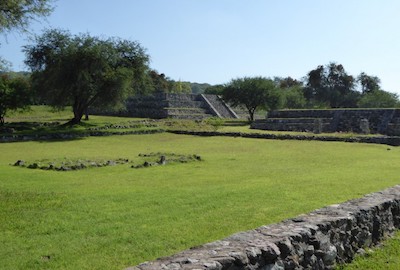
Tres Cerritos
This site along with Queréndaro, Huandacareo, Araró, Zinapécuaro, etc., was one of the numerous enclaves that surrounded the Patzcuaro lake region. Archaeological materials found in the area shown some cultural exchange with the people from Teotihuacan.
The archeological area dates back to the Late-Classic horizon (6th to 9th Centuries). The most notable remains are the “Montículo 1” (platform), located in the northwest of the site, and the main plaza with a shrine in the middle. Open daily from 10:00 a 17:00 hrs.
Tarímbaro
Highlights include a 16th Century Franciscan Ex-Convent, the Sanctuary of the Virgin of the Stairway, and an old hacienda.
Charo
It is located only 11 km from Morelia. It has a Plateresque Augustinian Convent dating from 1578 with murals of religious subjects.
Copándaro de Galeana
There is an Augustian Ex- Convent built in 1570 with interesting murals.
Villa Morelos
This town is located 70 km from Morelia. There is a 16th century Augustan Ex-Convent.
Teremendo de los Reyes
The town’s main attractions are: the 16th century temple of “Los Santos Reyes”, the civil plaza, the desert-like landscape full of cacti in the a volcano crater called “La Alberca” and the archeological vestiges located in “Los Lobos” ravine.
Huandacareo
The town lays at the shores of the Cuitzeo Lagoon. This place was under the influence of the Tarascan Empire, at least 300 year before the Spaniards arrived to the region. The zenit of this civilization was in the 12th Century when most the remains were built, althought here are some ruins from previous years.
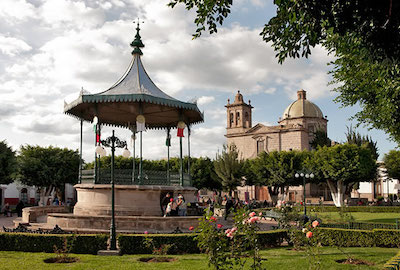
Cuitzeo
Lake is located on the Morelia-Salamanca highway 34 kilometers from Morelia. It is famous for its rich “charal” (lake fish), which the villagers prepare in multiple manners. On the high lands of the town is the Augustinian Ex-Convent of St Mary Magdalene, which is considered the most beautiful of the state because of its magnificent 16th century Plateresque architecture.
The most notorious structures are the sunken plaza, the platforms number 1 and 2, and “patio de la tumba” (grave’s yard). Open daily from 10:00 to 18:00 hrs. It is also famous for its hot springs and the “carnitas” (little meats), a dish made of braised or roasted and then fried or sauteed pork.
Capula
It is famous for its delicately hand painted ornament clay handicraft. The main attractions are: the Santiago Apostol Temple built in the 16th century, and the house of the artist Juan Torres, turn into a gallery with an exhibit of his paintings and sculptures.
Zinapécuaro
A community worth visiting because of its multiple hot springs which feed a bathing resort that has hotel service and an aquatic park. Besides, it has a 16th century Franciscan Ex-Convent.
Jesús del Monte
There is a 16th century Augustinian temple. Woods, creeks, rivers and waterfalls, an ideal landscape for camping, hiking and mountain cycling surround the town.
More Tourist Attractions in MICHOACAN
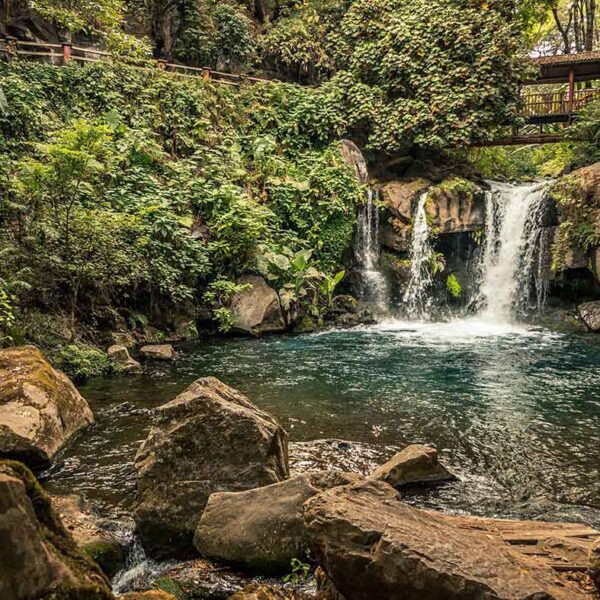
Uruapan
Uruapan is the second most important city in the state of Michoacán has a history that dates back to the pre-Hispanic era. Uruapan has been qualified as “the orchard of Michoacán” or “World capital of the avocado”. Nevertheless, the more deserved title is “the true cradle of the lacquer”, due to the production of trays, cups, masks, boxes, and other wooden objects, artistically decorated with this technique that goes back to the pre-Hispanic period. Among its multiple attractions, the city has magnificent historical monuments like the Franciscan Parish Church that preserves part of its 16th Century walls, and a Plateresque style front that was originally on the main façade; indeed worthy of admiring.… Read More
Guided Tours in MICHOACAN
Fliughts & Hotels in MICHOACAN
More Tourist Attractions in MEXICO

Gastronomy
The Gastronomy of Mexico has a great diversity of typical dishes, which is why it was recognized by UNESCO as Intangible Heritage of Humanity. The basic and representative ingredients of Mexican dishes are: corn, coriander, chili, beans, piloncillo, nopal and tomato. Mexican cuisine is also characterized by its sauces, which serve as an accompaniment to traditional dishes, prepared based on spices.… Read More

Ecotourism and Adventure
Mexico is one of the best countries for Ecotourism as it has a great variety of flora and fauna, as well as a large number of refuges for extraordinary species. You can enjoy recreational activities of appreciation and knowledge of nature through contact with it, such as: stargazing, observation of natural attractions, wildlife and bird watching. Throughout México there are more than 176 protected natural areas, 5 of them considered by UNESCO as Natural Heritage of Humanity. Just for this and much more, we believe that Mexico is a Paradise for Ecotourism.… Read More

Capital Cities
Folklore, gastronomy, literary culture, art and exhibitions, is what you will find in the capitals of the states of Mexico. To the north, colonial Mexico, Puebla, Guadalajara, Guanajuato, the Sonoran desert and the California peninsula. To the east Veracruz and the gulf. To the west Acapulco, Oaxaca and Tuxtla Gutiérrez. And to the south the Riviera Maya and the pyramids of Chichén-Itzá, Tulúm and Cobá in Yucatán, Palenque in Chiapas, the cenotes, and the Central American jungles.… Read More

Magical Towns
A Magical Town is a place with symbols and legends, towns with history that in many cases have been the scene of transcendent events for our country, they are places that show the national identity in each of its corners, with a magic that emanates from its attractions ; visiting them is an opportunity to discover the charm of Mexico. The Magical Towns Program contributes to revalue a set of populations in the country that have always been in the collective imagination of the nation and that represent fresh and varied alternatives for national and foreign visitors. A town that through time and in the face of modernity, has conserved, valued and defended its historical, cultural and natural heritage; and manifests it in various expressions through its tangible and intangible heritage. A Magical Town is a town that has unique, symbolic attributes, authentic stories, transcendent events, everyday life, which means a great opportunity for tourist use, taking into account the motivations and needs of travelers.… Read More

Traditions in Mexico
It is practically impossible to make a meticulous, and above all, accurate selection of the places to visit in Mexico. Each place that our country houses is unique and beautiful in its own way. Mexico, with its nearly 2 million km², has a large number of scenarios to offer, as well as endless activities to do. Do not lose your way and enter the places to visit in Mexico. In Mexico, apart from the beaches and its famous archaeological sites, there are many other really interesting sites and activities that you should know. In the surroundings of the main cities you will find places full of culture and tradition, where you can spend relaxing, interesting and fun vacations. On your trip through Mexico you cannot stop obtaining souvenirs, the crafts that are made here are of the highest quality and recognized worldwide. A shopping tour cannot be missed.… Read More

Beaches
On the Beaches of Mexico you can immerse yourself in the intense blue ocean of the Pacific bays, sunbathe on the shore of the warm and transparent waves of the Caribbean Sea in Quintana Roo or even rest on the beautiful coasts of the Gulf of Mexico. Mexican beaches hide wonderful secrets for the traveler. By visiting them, in addition to enjoying the excellent climate and water activities, you can discover splendid archaeological sites and interesting colonial cities without traveling long distances.… Read More

States Of Mexico
Mexico has an incredible diversity of landscapes, where the beauty of its beaches, internationally recognized, stands out. In its vast territory of coasts, there are beaches of unparalleled beauty, and colorful landscapes. A large network of first-class hotels and tourist services is available to visitors to these beaches. Mexico is also mystical places, dotted with archaeological testimonies inherited from its original inhabitants. Monuments made by the Mayas, Aztecs and Toltecs are located in magical landscapes, like lighthouses in an ocean of natural beauty. They offer visitors buildings that tell their history, and museums that collect their cultural heritage. And that keep alive ancestral traditions, in ceremonies and festivals, where you can enjoy cultural activities and entertainment.… Read More

Archaeological Sites
The Archaeological Zones are the cultural past of every Mexican. You will be amazed at the ambient, nature and the environment that surrounds them. Climbing to the top or being around it will take us back in time to admire every detail. México is a country of culture and traditions, many of which we have inherited from the pre-Hispanic inhabitants of this vast territory, although it is true that there were more settlements in the central and southern part of the country, it is also possible to find some archaeological remains in the north.
… Read More

